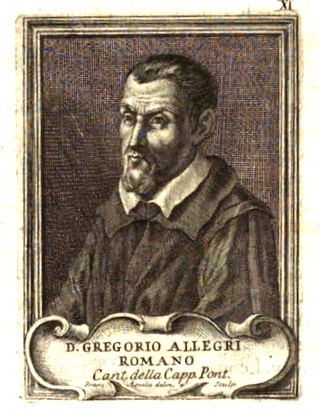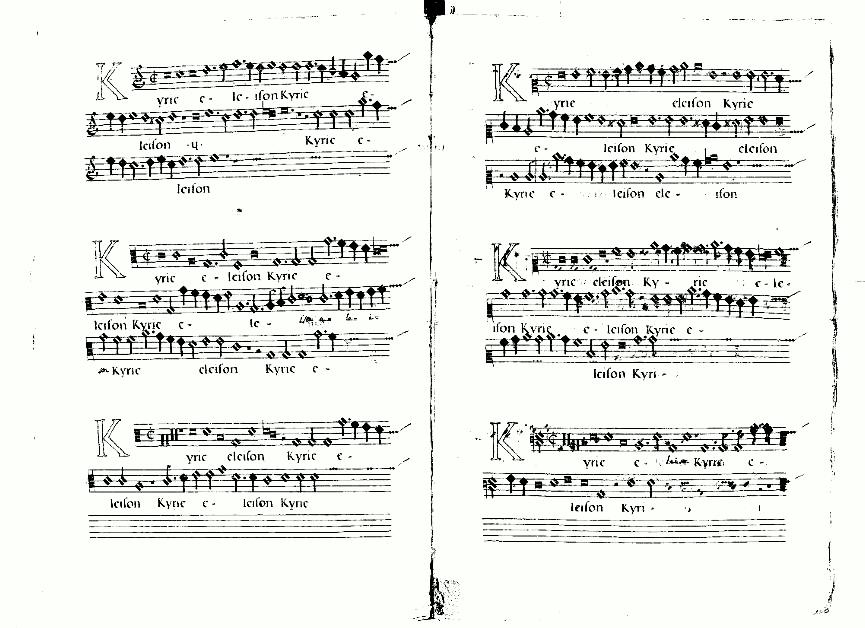
The Missa Salvatorem exspectamus by Gregorio Allegri
❧
The composer Gregorio Allegri is best known for his Miserere and all the tradition around the Papal chapel during the seventeenth and eighteenth centuries. Besides this wider-known composition, it is not an easy task to list other works by Allegri.
The composer was born in Rome sometime during 1582. Together with his brother Domenico, he was a choirboy from 1591 to 1596 at the Roman church of S. Luigi dei Francesi, having as chapel master Giovanni Bernardino Nanino. He appears as a tenor in the chapel of S. Luigi dei Francesi from 1601 to 1604. According to the Grove article his obituary states that he studied with Giovanni Maria Nanino, older brother of Giovanni Bernardido, who preceded him as chapel master at S. Luigi dei Francesi (Roche & O’Regan, 2001).

From 1607 to 1621 he appears as a singer and composer at the cathedrals of Fermo and Tivoli, and was chapel master at the Roman church of Santo Spirito in Sassia by August 1628. On 6 December 1629 he entered the Papal Chapel as an alto singer during Urban VIII papacy, and was elected its chapel master for the jubilee year of 1650 (Roche & O’Regan, 2001).
In 1640 Allegri was elected by the chapel singers to revise Palestrina’s hymns later published in Antwerp in 1644 which, as the Grove authors state, was a sign that his contemporaries saw him as successor of Palestrina, regarding Allegri as a high figure in the continuation of the stile antico polyphonic tradition. He died in Rome on 7 February 1652 (Roche & O’Regan, 2001).
As mentioned before, Gregorio Allegri is best known for his Miserere although he also composed other works in the stile antico tradition much of it polychoral, being copied and recopied into the Cappella Sistina manuscripts by at least a century, as is the case of the present mass.

Among motets, psalms, lamentations, and a Te Deum we find five mass settings for five, six, and eight voices respectively: the Che fa oggi il mio sole, for five voices, the Salvatorem exspectamus and Vidi turbam magnam, for six voices, and the Christus resurgens and In lectulo meo for eight voices.
The Missa Salvatorem exspectamus is preserved in the choirbook Cappella Sistina 106, a manuscript copied by Horatius Felix around 1647 (Browne, 1984: 5). The inscription in the first folio reading “MISSA Saluatorem expectamus R D Gregorij Allegrij” ascribes it to Allegri. The layout of the (unidentified) six voices in the choirbook follows what is often found with the superius (g2), and the two tenor (c3, c3) parts in the verse folios, and the two altus (c2, c2) and the bassus (F3) parts in the rectos.
It is a parody mass that is based on Allegri’s own six-voice motet Salvatorem exspectamus for the First Sunday of Advent, which we were only able to find in a collection of music copied by the late eighteenth-century music and collector Fortunato Santini.

The mass follows basically the trends of the parody technique regarding the use of motivic material from the model. It is interesting to note that by the 1630s and 40s Allegri was still cultivating this technique inherited from the previous century in his masses which clearly places him as a central figure in the stile antico tradition.
He also works with expanding and reducing the number of voices in the prescribed sections. An example of this is the reduction from six to a SAAT quartet in the first ‘Christe eleison’, although he doesn’t follow this in the Gloria sections. In the Credo he reduced again the number of voices to four with the addition of a second superius making a quartet of SSAT.
In all I could state that this is a fine example of a seventeenth-century stile antico mass setting, in the Palestrinian tradition that we may find also in other Roman composers in the circle of the Papal institutions. There were also some echoes of these practices in the Iberian peninsula mass settings composed during this period.
BIBLIOGRAPHY
Primary sources
D-MÜs SANT Hs 4283 (Nr. 29) [Salvatorem expectamus a 6 Voci… del Sigr. Gregorio Allegri] https://fortunato-santini.de/edition-santini/140/ [modern transcription]
I-VAT Cap. Sist 106 [MISSA Saluatorem expectamus R D Gregorij Allegrij] https://digi.vatlib.it/view/MSS_Capp.Sist.106/
Secondary sources
ADAMI, A. (1711). Osservazioni per ben regolare il coro de I cantori della Cappella Pontificia. Rome: Per Antonio d’ Rossi alla Piazza di Ceri.
BROWNE, D. (1984). Two Masses of Gregorio Allegri: An edition of ‘”Missa Salvatorem expectamus” and “Missa Che fa oggi il mio sole”. Phd thesis in Musical Arts. Kansas City: University of Missouri, 1984.
O’REILLY, G. (2020). ‘Allegri’s Miserere’ in the Sistine Chapel. Woodbridge: The Boydell Press.
ROCHE, J.; O’REGAN, N. (2001). “Allegri, Gregorio”. Grove Music Online (accessed 2022/06/03). https://doi.org/10.1093/gmo/9781561592630.article.00602/
Luís Henriques is a PhD candidate in Musicology at the University of Évora and researcher in training at the University of Évora branch of the Centre for the Study of Sociology and Musical Aesthetics, based at the NOVA-FCSH.

